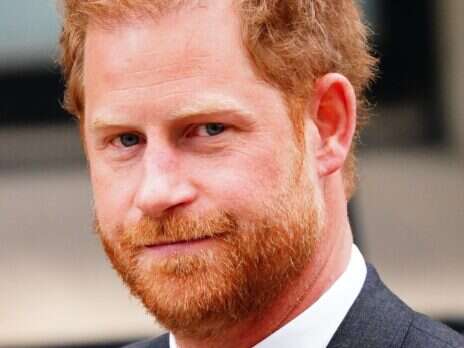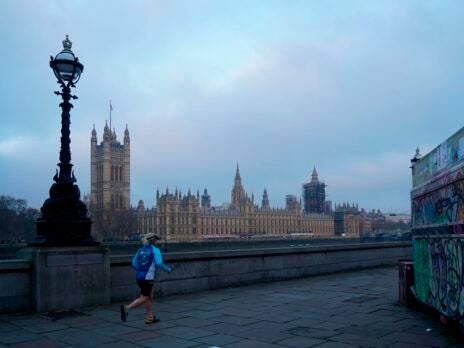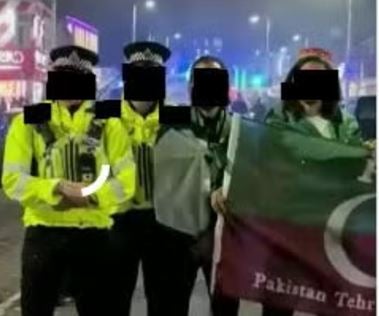
The law of privacy might be in a state of confusion, but in one respect it is completely clear: there is nothing to prevent one person taking a photograph of another in the street. That includes the police and accredited photographers, and on the face of it there is no reason why NUJ general secretary Jeremy Dear can object to photographs of NUJ members being taken by the police. But there is an important proviso: no harassment. Harassment is not defined by the Protection from Harassment Act 1997. It simply says that it ‘includes alarming the person or causing the person distress”.
A High Court judgment about the right of the police to take photographs on the street was handed down last month. It was not widely reported. Andrew Wood, a campaigner against the arms trade, attended Reed Elsevier’s AGM in 2006 in his capacity as a shareholder. He asked ‘one unobjectionable question’and afterwards was present at a demonstration. During and after the demonstration he was persistently followed and photographed by the police in a manner which – as the barrister representing the police admitted – ‘unsettled’him. The photos were taken because the police ‘feared unlawful activity’at an event scheduled to take place six months later.
Human rights
Wood asked the High Court to declare that the taking of photographs of him was unlawful and infringed his right to privacy under Article 8. The court refused. Relying on previous cases, Mr Justice McCombe held that ‘the mere taking of a photograph in a public street did not interfere’with his Article 8 rights and that this case and ‘many such cases will simply not involve intrusions sufficiently serious’to amount to a breach of the ‘fundamental rights and freedoms’which the convention was designed to uphold.
So, for the moment at least, photographers and police can photograph each other in the street with impunity provided there is no harassment. What each of them does with the photographs thereafter may well infringe privacy, but that is a different point: see the JK Rowling case, if it gets to trial, for the next instalment on that question.
But the police have an additional weapon at their disposal: common law powers to prevent and investigate crime. These entitle the police to prevent photographers taking photographs, or to confiscate their cards, if the police genuinely believe that in doing so they are, or may be, preventing crime.
The conduct of the police must, in the circumstances, be reasonable. This is a convenient fall-back position for the police: to prove their conduct was not reasonable places a very high burden on a photographer fighting for his or her right to freedom of expression under Article 10. As the judge in the Wood case remarked: ‘It is not the job of the courts to second guess the operational decisions of the police.”
Concern
Public concern that the police might be abusing their powers is rising. The extraordinarily high number of signatures on Austin Mitchell’s early day motion – 226 on going to press – deploring the high-handed manner in which the police are treating photographers on the streets reflects unease at legislative level. Mitchell said he would be asking the Home Office to ‘issue an instruction to remind the police that people are allowed to take pictures in a public place”.
On 22 May. Dear wrote to the Home Secretary complaining that the surveillance of photographers and journalists by the Forward Intelligence Team of the police amounted to ‘intimidation’and ‘virtual harassment”.
Misunderstood
The response by Commander Bob Broadhurst, in charge of public order policing, that ‘the job of FIT officers may, at a public order event, include interaction with photographers who, on production of valid forms of accreditation, will be able to continue with their work’does nothing to allay concern. Nor does his statement that they can take pictures ‘wherever operationally possible”.
It is clear that Broadhurst has completely misunderstood the position. The right to take photographs on the street has nothing to do with accreditation, nor with what is ‘operationally possible”. It is about the right of every citizen to take photographs on the street at any time provided he or she does not harass anyone. The right of the police to intervene claiming reasonable grounds for believing that the photographer is or may be involved in a crime, can and should be exercised only when genuinely necessary. Systematic banning of photography is beyond their powers. This is what Article 10 means when it protects our ‘freedom to receive and impart information and ideas without interference by a public authority”.
The irony is that the press, after decades of defending itself against individuals attempting to establish (successfully, it can now be said) a right to privacy, is now accusing the State of interfering with its own right to record public events without interference. Be that as it may, this is exactly why the European Convention of Human Rights was created in 1948. It may be that this interference is at a lower level than that perpetrated by the Stasi during the Cold War, but it is just such activity against which we have to be so vigilant.
Journalists are entitled to photograph public events. Someone needs to tell the police to be a little more careful, and the police would do well to listen.
Rupert Grey is a copyright and privacy lawyer at Swan Turton
Email pged@pressgazette.co.uk to point out mistakes, provide story tips or send in a letter for publication on our "Letters Page" blog




